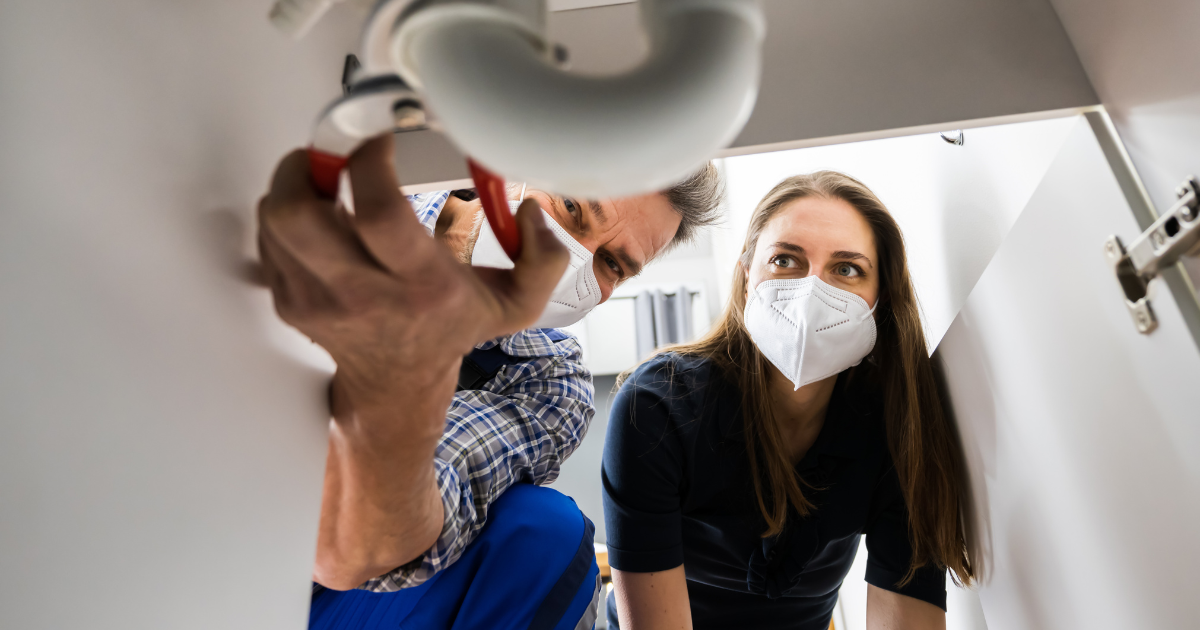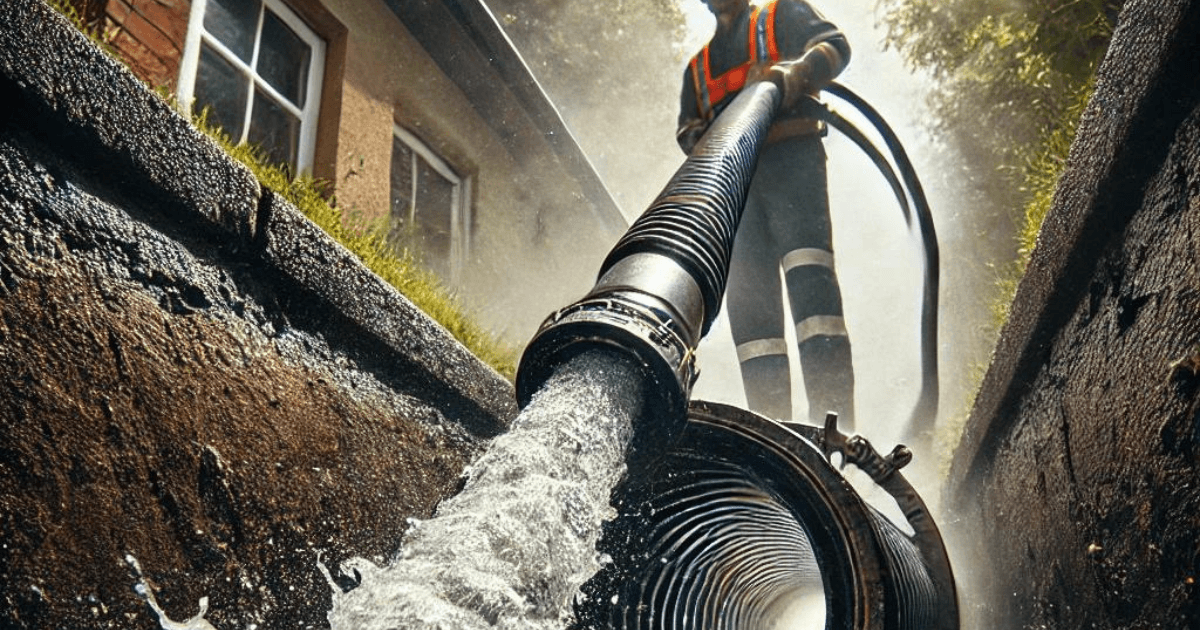When it comes to your home’s plumbing, pipe damage or failure is one of the most dreaded problems a homeowner can face. If you’re dealing with aging, leaking, or corroded pipes, you’re probably trying to decide between two major repair options: pipe lining and pipe replacement. But how do you know which one is right for you? While both solutions can effectively restore your plumbing system, they offer significantly different processes, costs, and long-term benefits. To make the best decision, we must break these two options down to their core fundamentals using first principles thinking.
Let’s dive deep into the mechanics behind each option and uncover insights that go beyond the usual cost vs. benefit discussion, offering new perspectives grounded in cutting-edge research, real-world applications, and forward-thinking ideas.
The Core Problem: Understanding Pipe Failure
Pipes fail for several reasons—corrosion, root intrusion, shifting ground, or wear and tear from years of use. These failures can result in leaks, water contamination, and serious property damage. For decades, traditional pipe replacement (digging up the old pipe and installing a new one) has been the go-to solution. However, advances in technology have brought us trenchless solutions like pipe lining. To choose the right option, you need to understand the nature of the problem and the most effective way to solve it.
Fundamentally, plumbing is about ensuring the smooth transport of water or waste. A pipe’s job is simple: it needs to remain sealed, resist corrosion, and keep a steady flow. When a pipe fails in one of these areas, the question becomes not just how to fix it, but how to fix it in a way that minimizes future issues and maximizes efficiency.
What Is Pipe Lining?
Pipe lining, also known as Cured-In-Place Pipe (CIPP), is a trenchless technology that repairs pipes without digging them out. The process involves inserting a resin-soaked liner into the damaged pipe, inflating it, and curing it in place, creating a new pipe within the old one. This method works well when the structural integrity of the pipe is still intact but needs reinforcement due to corrosion, cracking, or minor damage.
The First Principles Behind Pipe Lining:
- Sealing and Reinforcing: By creating a new pipe within the old one, pipe lining fundamentally reuses the existing structure while adding a corrosion-resistant, seamless layer. This addresses both structural weakness and leaks in one process.
- Minimal Excavation: Rather than the traditional approach of digging up entire sections of land or walls, pipe lining works by accessing pipes through small entry points. This significantly reduces both the time and damage to property.
Real-World Application: Imagine your home’s plumbing system like a network of veins, and a damaged pipe is a weak, leaky artery. Instead of surgically removing the entire artery, pipe lining inserts a stent (or new inner layer), allowing it to function as new without the trauma of an invasive procedure. In urban environments, where digging up streets or landscaping is costly and disruptive, this minimalistic approach is especially appealing.
Pros of Pipe Lining:
- Minimally Invasive: Requires only small access points, preserving landscaping, driveways, and walls.
- Quick Completion: Typically completed within a day or two, reducing downtime for homeowners.
- Durable Solution: Once cured, the epoxy resin lining is highly resistant to corrosion, root intrusion, and leaks, with an expected lifespan of 50 years.
- Cost-Effective in Certain Situations: When pipes run under expensive landscaping or driveways, the reduced need for excavation can make lining more affordable.
Limitations:
- Not Suitable for Severely Damaged Pipes: If the pipe is fully collapsed or too deteriorated, pipe lining might not be effective.
- Upfront Cost: Lining can sometimes be more expensive upfront compared to basic pipe replacement, depending on the complexity of the project.
What Is Pipe Replacement?
Pipe replacement is the traditional method where the old, damaged pipe is excavated and replaced with a new one. This method requires digging trenches, removing the old pipe, and installing new piping (usually made of modern materials like PVC or copper).
The First Principles Behind Pipe Replacement:
- Complete Replacement: The old, damaged pipe is fully removed, eliminating any possibility of future problems arising from the existing infrastructure.
- Material Upgrade: Most pipe replacements use modern, more durable materials such as PVC, which resists corrosion and is less likely to crack under pressure.
Real-World Application: Pipe replacement is like removing a diseased part of an organ in surgery—it’s a complete reset. This option is often necessary when pipes have collapsed, been severely invaded by tree roots, or are irreparably damaged.
Pros of Pipe Replacement:
- Long-Term Durability: Replacing pipes with modern materials like PVC or copper ensures that the new system will last for decades, often up to 100 years.
- Complete Solution: If the old pipe is severely damaged or collapsed, replacement guarantees a new, fully functional pipe system.
- Suitable for All Types of Damage: Unlike lining, replacement works for all levels of pipe damage, including fully deteriorated systems.
Limitations:
- Significant Disruption: Requires extensive digging, which can damage landscaping, driveways, and other structures on the property.
- Time-Consuming: Excavation and restoration can take several days to weeks, depending on the complexity of the system.
- Higher Total Cost: When you factor in the cost of excavation, pipe replacement, and property restoration, the total price can exceed that of trenchless solutions.
Cost Comparison: Short-Term Savings vs. Long-Term Investment
Homeowners often focus solely on the upfront cost of repairs, but the true cost involves many factors: the life expectancy of the solution, future maintenance, and restoration costs.
Pipe Lining Costs:
- Average cost: $80 to $250 per foot, depending on the diameter and condition of the existing pipe.
- No landscape restoration needed, meaning no additional costs for replacing lawns, driveways, or sidewalks.
- Long-term savings in maintenance due to the durability of the lining.
Pipe Replacement Costs:
- Average cost: $50 to $200 per foot for new pipes, but this figure increases substantially when factoring in excavation and property restoration.
- High costs for re-landscaping, repaving, or rebuilding damaged structures like walls and driveways.
- Fewer long-term maintenance issues because a fully new system is installed.
ROI Insight: While pipe lining might seem more expensive upfront, the lack of extensive excavation and landscape restoration can make it more cost-effective over the life of the system. For homeowners with significant landscaping or urban properties, lining can provide significant long-term savings.
Environmental Impact: Which Option Is Greener?
In today’s world, sustainability matters. The environmental impact of your plumbing repair choice can have far-reaching consequences.
Pipe Lining and Sustainability:
Pipe lining uses the existing infrastructure, significantly reducing material waste. Because it requires minimal excavation, it also leaves the surrounding ecosystem largely undisturbed. Fewer machines, fewer materials, and less energy are required, resulting in a smaller carbon footprint.
Pipe Replacement and Environmental Costs:
Traditional pipe replacement generates substantial waste—old pipes need to be removed and disposed of, and significant excavation disrupts soil and vegetation. Heavy machinery required for digging increases fuel consumption and emissions.
Which Method Is More Durable? A Longevity Perspective
Both methods offer long-lasting solutions, but each has its own strength when it comes to durability and maintenance.
- Pipe Lining: Typically lasts up to 50 years, with the seamless inner layer highly resistant to corrosion, root intrusion, and cracks.
- Pipe Replacement: New pipes, especially PVC or copper, can last 50 to 100 years, providing a permanent solution for seriously damaged systems.
Key Factors to Consider
Before choosing between pipe lining and pipe replacement, here are some crucial factors to keep in mind:
- Condition of Existing Pipes: If your pipes are severely collapsed or in a state of near-total deterioration, replacement is often the only viable option.
- Location of Pipes: If pipes are located beneath driveways, expensive landscaping, or inside walls, pipe lining might be the least disruptive and most cost-effective solution.
- Budget vs. Long-Term Savings: While pipe lining can be more expensive upfront, it might save you money in the long run by avoiding the costs of excavation and landscape restoration.
- Time and Convenience: If you’re looking for a quick solution with minimal disruption, pipe lining is typically the faster option.
Conclusion: Which Is Right for You?
Both pipe lining and pipe replacement are effective ways to solve your plumbing issues, but they serve different needs. If you want to avoid the mess, cost, and disruption of excavation, pipe lining is often the best solution. However, for pipes that are fully collapsed or severely damaged, pipe replacement is the more durable, long-term fix.
The best way to make a final decision is to consult with a professional who can assess the condition of your pipes, explain the benefits of each method, and provide an estimate tailored to your home’s specific situation.
FAQ: Pipe Lining vs. Pipe Replacement
How long does pipe lining last compared to pipe replacement?
Pipe lining typically lasts 50 years, while pipe replacement can last anywhere from 50 to 100 years, depending on the material used.
Is pipe lining as reliable as replacing the pipes entirely?
For structurally sound pipes, pipe lining is just as reliable as full replacement. However, for severely damaged or collapsed pipes, replacement is the better option.
What is the cost difference between pipe lining and full pipe replacement?
Pipe lining can range from $80 to $250 per foot, while pipe replacement costs around $50 to $200 per foot, though this increases significantly when you account for excavation and landscape restoration.
Will pipe lining disrupt my landscaping or driveway?
Pipe lining requires only small access points, making it minimally invasive. In most cases, there is no need to disturb landscaping, driveways, or walls.
What factors determine whether I should choose pipe lining or replacement?
The condition of your existing pipes, their location, and your budget are key factors. Pipe lining is more suitable for pipes with minor structural issues, while replacement is necessary for pipes that are severely damaged or collapsed.





